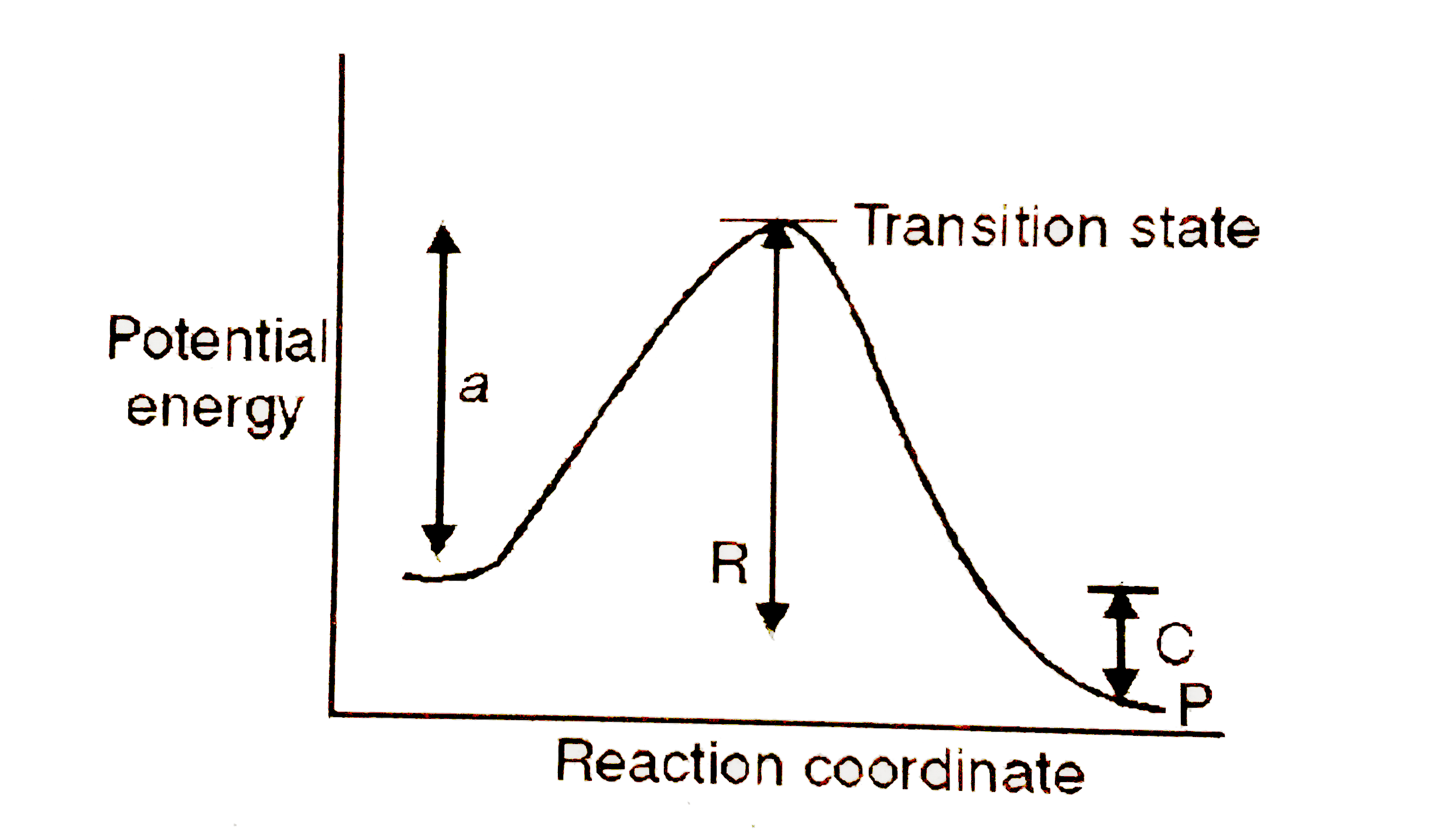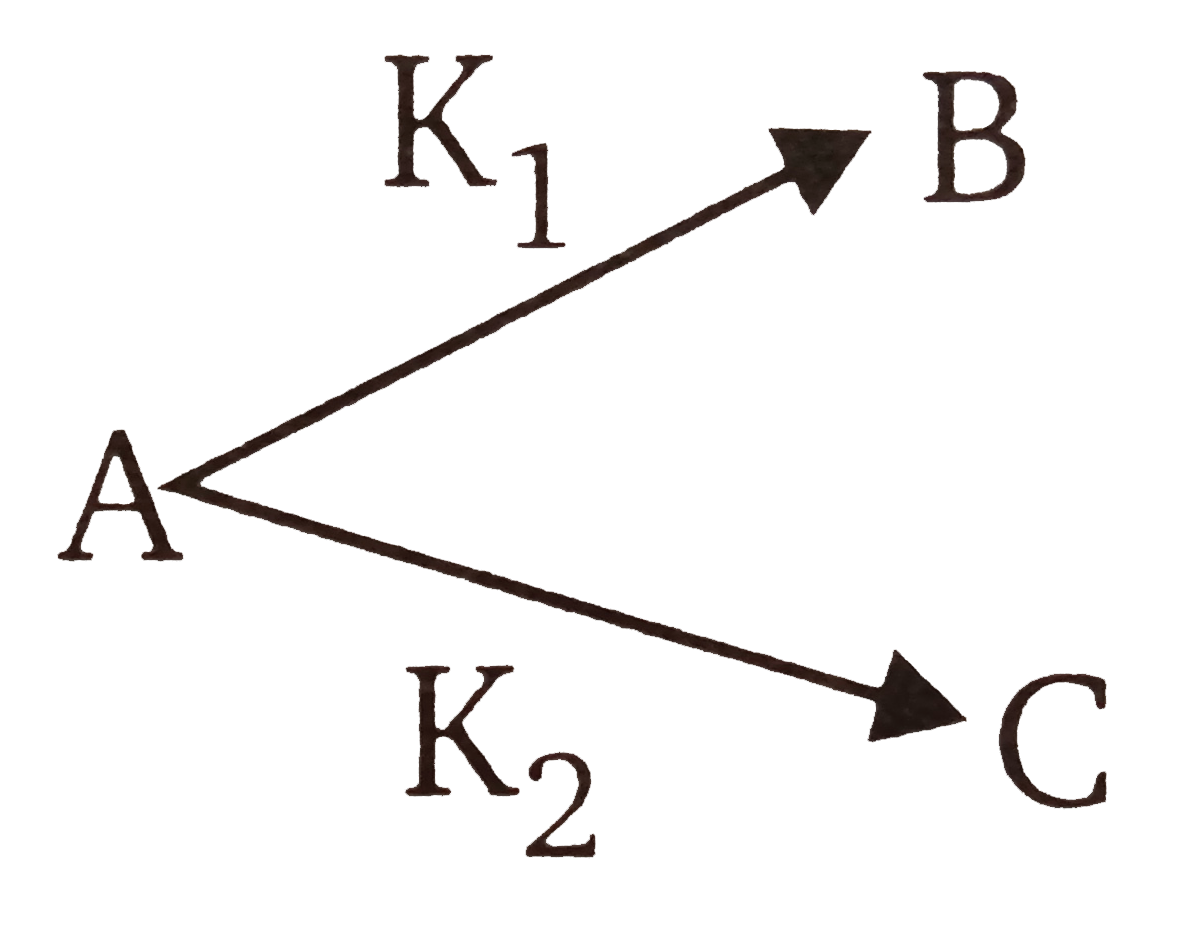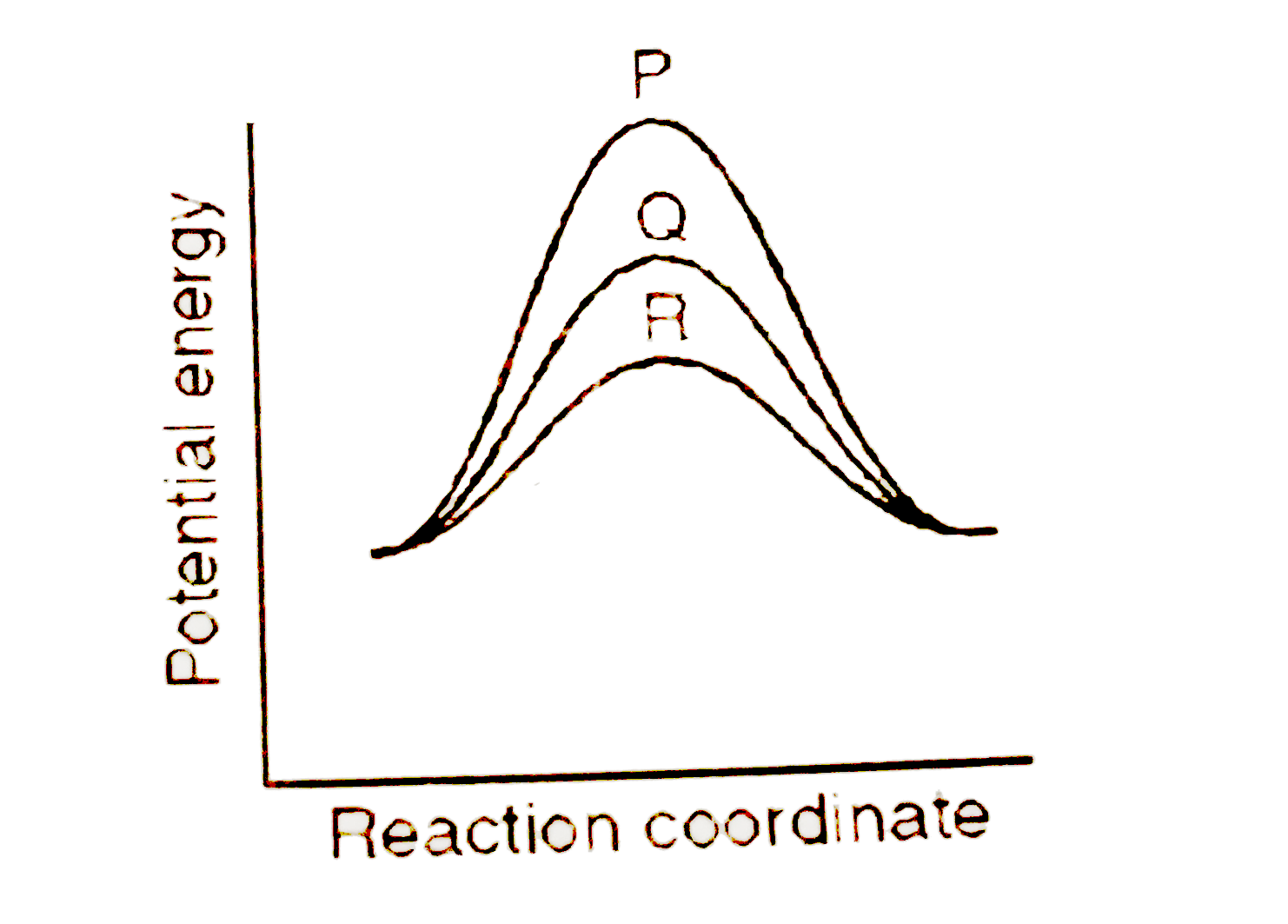Complete Solutions to Revision Question of chapter RATES OF REACTIONS AND CHEMICAL KINETICS of Class 11 book with complete answers and questions
| Class 11 | CHEMISTRY |
| Chapter | RATES OF REACTIONS AND CHEMICAL KINETICS |
| DINESH OBJECTIVE CHEMISTRY | Revision Question |
| Number Of Questions | 100 |
| Academic Year | 2023-24 |
The rate of reaction `A + B rarr` Product is given by the equation `r = k[A][B]`. If `B` is taken in large excess, the order of the reaction would be
View SolutionIf the initial concentration of reactant in certain reaction is double, the half-life periof of the reaction doubles, the order of a reaction is
View SolutionWhich of the following statement about the catalyst is/are true?
View SolutionIn a first order reaction, `75%` of the reactants disappeared in `1.386 hr`. What is the rate constant ?
View SolutionA substance `''A''` decomposes in solution following the first order kinetics. Flask `I` contains `1L` of `1 M` solution of `A` and falsk `II` contains `100 mL` of `0.6 M` solution. After `8 hr`, the concentration, of `A` in flask `I` becomes `0.25 M`. What will be the time for concentration of `A` in flask `II` to become `0.3 M` ?
View SolutionHalf life period of 2 nd order reaction is
View SolutionThe oxidation of oxalic acid by acidified `KMnO_(4)` is an example of autocatalyiss. It is due to which of the following ?
View SolutionDiazonium salt decomposes as
`C_(6)H_(5)N_(2)^(+)Cl^(-) rarr C_(6)H_(5)Cl + N_(2)`. At `0^(@)C`, the evolution of `N_(2)` becomes two times faster when the initial concentration of the salt is doubled. Therefore, it is
View SolutionThe hydrolysis of ester in alkaline medium is a
View SolutionThe conversion of `A rarr B` follows second-order kinetics. Doubling the concentration of `A` will increase the rate of formation of `B` by a factor
View SolutionThe rate constant for a first order reaction whose half life is 480 sec, is :
View SolutionSelect the law that corresponds to data shown for the following reaction `A+B rarr` Products
`{:(Exp,[A],[B],"Initial rate",),(1,0.012,0.035,0.1,),(2,0.024,0.070,0.8,),(3,0.024,0.035,0.1,),(4,0.012,0.070,0.8,):}`
View SolutionThe reaction `2H_(2)O_(2) rarr 2H_(2)O+O_(2)` is
`r=k[H_(2)O_(2)]`
View SolutionA chemical reaction has catalyst X. Hence X
View SolutionThe raction `2FeCl_(3) + SnCl_(2) rarr 2FeCl_(2) + SnCl_(4)` is an example of
View SolutionThe phenomenon of emission of visible light as a result of chemical change is known as
View SolutionRate constant in case of first order reaction is
View SolutionFor a zero order reaction `A rarr B, t_(1//2)` is (k is rate constant)
View SolutionFor a chemical reaction `A rarr B`, it is found that the rate of reaction doubles when the concentration of `A` is increased `4` times. What is the order of reaction ? Suggest the rate law also.
View SolutionFor the first order reaction with rate contant `k`, which expression gives the half life period ? (Initail conc. = a)
View SolutionThe rate constant is given by the equation `k = P.Ze^(-E//RT)`. Which factor should register a decrease for the reaction to proceed more rapidly ?
View SolutionFor a reaction of type `A +B rarr` products it is observed that doubling concentration of A causes the reaction rate to be four times as great, but doubling amount of B does not affect the rate,The rate equation is
View SolutionFor the reaction `A rarr B`, the rate law expression is rate `=k[A]`. Which of the following statements is incorrect ?
View SolutionThe reaction
`N_(2)O_(5)` (in `C Cl_(4)` solution) `rarr 2NO_(2)` (solution) `+(1)/(2) O_(2)(g)` is of first order in `N_(2)O_(5)` with rate constant `6.2 xx 10^(-1) s^(-1)`. What is the value of rate of reaction when `[N_(2)O_(5)] = 1.25` mole ?
View Solution`75%` of a first-order reaction was completed in `32` minutes, when was `50%` of the reaction completed ?
View SolutionTh Arrhenius equation expressing the effect of temperature on the rate constant of the reaction is
View SolutionThe first order rate constant for the decomposition of `N_(2)O_(5)` is `6.2 xx 10^(-4) sec^(-1)`. The `t_(1//2)` of decomposition is
View SolutionA reaction is 50 % complete in 2 hours and 75 % complete in 4 hours the order of reaction is
View SolutionVelocity constant of a reactin at 290 K was found to be `3.2 xx 10^(-3)`. At 300 K it will be
View SolutionIf reaction between A and B to give C shows first order kinetics in A and second order in B, the rate equation can be written as
View SolutionFor a first order reaction, the half-life period is independent of
View SolutionA catalyst increases rate of reaction by
View SolutionFor a first order reaction, obatin a positive slope, we need to plot [A] in the concentration of reactant AB
View SolutionGiven `t_(1//2) =3` hr. Then how many gram of a substance will remain after 18th hr from 300 gram of a substance
View SolutionFor the reaction `A + B rarr C + D`, doubling the concentration of both the reactants increases the reaction rate by `8` times and doubling the initial concentration of only `B` ismply doubles the reaction rate. What is the rate law for the reaction ?
View SolutionThe effect of temperature on reaction rate is given by
View SolutionThe decomposition of a substance follows first order kinetics. If its conc. Is reduced to 1/8th of its initial value, in 24 minutes, the rate constant of decomposition process is
View SolutionFor a first order reaction, the plot of log `k` against 1/T is a straight line. The slope of the line is equal to
View Solution`"1 dm"^(3)` of `2 M CH_(3)COOH` is mixed with `"1 dm"^(3)` of 3 M ethanol to form ester. The decrease in the initial rate if each solution is diluted with an equal volume of water would be
View Solution`ROOR'+H_(2)Ooverset("HCl")(rarr)RCOOH+R'OH` ltbtgt What type of reaction is this ?
View Solution75 % of first order reaction is complete in 30 minutes. What is the time required for 93.75 % of the reaction (in minutes) ?
View SolutionFor a given reaction, `t_(1//2) = 1 //ka`. The order of this reaction is
View SolutionThe conversion of `A rarr B` follows second-order kinetics. Doubling the concentration of `A` will increase the rate of formation of `B` by a factor
View SolutionThe activation energy of a reaction can be determined by
View SolutionFor the reaction `2N_(2)O_(5) rarr 4NO_(2)+O_(2)` rate of reaction and rate constant are `1.02 xx 10^(-4)` and `3.4 xx 10^(-5) sec^(-1)` respectively. The concentration of `N_(2)O_(5)` at that time will be
View SolutionThe time taken for 90% of a first order reaction to be completed is approximately
View SolutionThe half-life period for the first order reaction is 693 seconds. The rate constant of this reaction would be
View SolutionThe reaction `2N_(2)O_(5)hArr 2N_(2)O_(4)+O_(2)` is
View SolutionCollision theory is application to
View SolutionA chemical reaction was carried out at 300 K and 280 K. The rate constants were found to be `k_(1) and k_(2)` respectively. Then
View SolutionHalf-life of a reaction is found to be inversely proportional to the cube of its initial concentration. The order of reaction is
View SolutionThe order of reaction is decided by
View SolutionA graph plotted between `log k` versus `1//T` for calculating activation energy is shown by
View SolutionUnits of rate constant of first and zero order reactions in terms of molarity `M` are respectively:
View SolutionWhich of the following is correct for a first order reaction ?
View Solution`2A rarr B + C`. It would be a zero-order reaction when
View SolutionIf `3A rarr 2B`, then the rate of reaction of `+ (dB)/(d t)` is equal to
View SolutionWhen we increase the temperature, the rate of reaction increases because of
View SolutionIn Arrhenius plot, intercept is equal to
View SolutionThe rate of reaction is doubled for `10^(@)C` rise in temperature. The increase in the reaction rate as a result of temperature rise from `10^(@)C` to `100^(@)C` is
View SolutionFor the reaction:
`H_(2) + Cl_(2) underset("Sunlight")rarr2HCl`
taking place on water. Find the order of reaction.
View SolutionThe temperature dependence of rate constant (k) of a chemical reaction is written in terms of Arrhenius equation, `k=Ae^(-E_(a)//RT))` Activation energy `(E_(a))` of the reaction can be calculate by plotting
View SolutionIf the rate of the reaction is equal to the rate constant, the order of the reaction is
View SolutionThe rate law for a reaction between the substances A and B is given by rate `= K[A]^(n) [B]^(m)`. On doubling the concentration of A and having the concentration of B, the ratio of the new rate to the earlier rate of the reactio will be:
View SolutionTemperature coefficient of a reaction is 2. When temperature is increased from `30^(@)C` to `100^(@)C`, rate of the reaction increases by
View SolutionFor the reaction `A + Brarr C +D`, if concentratiton of A is doubled without altering the concentration of B, the rate gets doubling, If the concentration of B is increased by nine times without altering the concentration of A, the rate gas tripled. The order of reaction is
View SolutionThe potential energy diagram for a reaction `R rarr P` is given by

`Delta H^(@)` of the reaction compounds to the energy
View SolutionRate of 1st order depends upon
View SolutionFor a first order reaction, units of rate constant are
View SolutionThe unit of second order reaction rate constant is
View SolutionThe half-life of a reaction is halved as the initial concentration of the reaction is doubled. The order of the reaction is
View SolutionThe rate constant of a reaction at temperature 200 K is 10 times less than the rate constant at 400 K. What is the activation energy `(E_(a))` of the reaction ? (R = gas constant)
View SolutionWhich one of the following equation is correct forr the reaction : `N_(2)(g)+3H_(2)(g)rarr2NH_(3)(g)` ?
View SolutionFor a chemical reaction ……. Can never be a fraction
View Solution`75%` of a first-order reaction was completed in `32` minutes, when was `50%` of the reaction completed ?
View SolutionThe time taken for the completion of 3/4 of a first order reaction is
View SolutionThe rate constant `k`, for the reaction `N_(2)O_(5)(g) rarr 2NO_(2) (g) + (1)/(2) O_(2)(g)` is `2.3 xx 10^(-2) s^(-1)`. Which equation given below describes the change of `[N_(2)O_(5)]` with time ? `[N_(2)O_(5)]_(0)` and `[N_(2)O_(5)]_(t)` correspond to concentration of `N_(2)O_(5)` initially and at time, `t` ?
View SolutionThe rate of first-order reaction is `1.5 xx 10^(-2) M "min"^(-1)` at `0.5 M` concentration of reactant. The half-life of reaction is
View SolutionThe velocity constant of a reaction at 290 K was found to be `3.2 xx 10^(-3) s^(-1)`. When the temperature is raised to 310 K, it will be about
View SolutionThe reaction, `2SO_(2(g)) + O_(2(g))hArr2SO_(3(g))` is carried out in a 1 `dm^(3)` and 2 `dm^(3)`vessel separately. The ratio of the reaction velocity will be
View SolutionThe activation energy for most of the reactions is approximately `"50 kJ mol"^(-1)`. The value of temperature coefficient for such reactions is
View SolutionWhich is correct about zero order reaction ?
View SolutionThe half-life of `2` sample are `0.1` and `0.4` seconds. Their respctive concentration are `200` and `50` respectively. What is the order of the reaction
View SolutionIn a first order reaction, the concentration of the reactant decreases form `0.8 M` to `0.4 M` in `15 min`. The time taken for the concentration to change form `0.1 M` to `0.025 M` is
View SolutionThe rate equation for the reaction `2A+B rarr C` is found to be: `rate = k[A][B]`. The correct statement in relation of this reaction is that
View SolutionFor the reaction : `2A +B rarr C +D`, measurement of the rate of the reaction at varying concentrations are given below
`{:("Trial No.","[A]","[B]","rate"("m mole L"^(-1)"s"^(-1))),(1,0.010,0.010,2.5),(2,0.010,0.020,5.0),(3,0.030,0.020,45.0):}`
The rate law is therefore
View SolutionA first-order reaction was started with a decimolar solution of the reactant, `8` minutes and `20 `seconds later its concentration was found to `M//100`. So the rate constant of the reaction is
View SolutionA substance undergoes first order decomposition. The decomposition follows two parallel first order reaction as:
 and `KP_(1)=1.26xx10^(-4)sec^(-1)`
and `KP_(1)=1.26xx10^(-4)sec^(-1)`
`K_(2)=3.80xx10^(-5)sec^(-1)`
The percentage distribution of B and C are:
View SolutionFor reaction `aA rarr xP`, when `[A] = 2.2 mM`, the rate was found to be `2.4mM s^(-1)`. On reducing concentration of `A` to half, the rate changes to `0.6 mM s^(-1)`. The order of reaction with respect to `A` is
View SolutionAn endothermic reaction with high activation energy for the forward reaction is given by the diagram
View SolutionThe energy of activations for forward and backward change for an endothermic reaction, `X rarr Y` are `E_(f)` and `E_(b)` respectively. Which of the following is correct ?
View SolutionA reaction involiving two different reactants can never be:
View SolutionAccording to law of mass action rate of a chemical reaction is proportional to
View SolutionFor a first-order reaction `A rarr B` the reaction rate at reactant concentration of `0.10 M` is found to be `2.0 xx 10^(-5) "mol" L^(-1) s^(-1)`. The half-life period of the reaction is
View SolutionThe experimental rate law for a reaction
`2A + 2B rarr` Product, is
`V prop C_(A) C_(B)^(1//2)`. If the concentration of both A and B are doubled the rate of reaction increases by a factor of
View SolutionWhat is the time required for a first order reaction to be 99 % complete, compared to the time taken for the reaction to be 90 % complete ?
View SolutionDuring the decomposition of `H_(2)O_(2)` to give oxygen, `48 g O_(2)` is formed per minute at a certain point of time. The rate of formation of water at this point is
View SolutionIf a homogeneous catalytic reaction can take place through three alternative paths as depicted below, the catalytic efficiency of P,Q R representing the relative case would be

View SolutionObserve the following reaction
`2A +B rarr C`
The rate of formation of C is `2.2 xx 10^(-3) "mol L"^(-1) "min"^(-1)`. What is the value of `-(d[A])/(dt)("in mol L"^(-1) "min"^(-1))` ?
View SolutionHalf life of a radioactive substance is 6 minute. If its initial amount is 32g, then amount present after 18 minute is
View Solution
Revision Question questions and complete solutions for chapter RATES OF REACTIONS AND CHEMICAL KINETICS of S DINESH & CO CHEMISTRY (HINGLISH) of Class 11